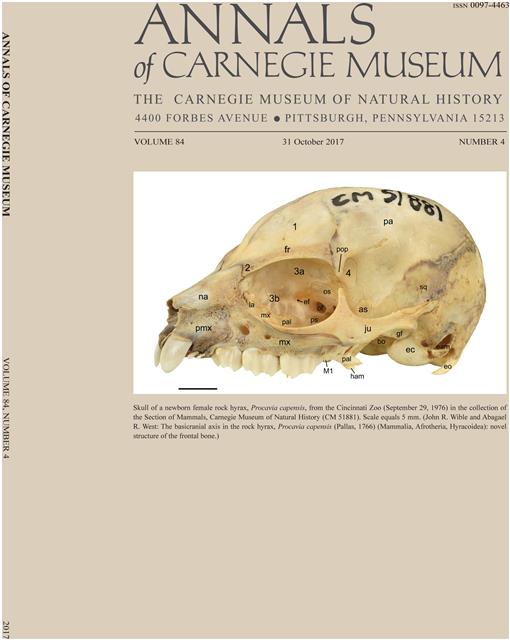Pipestone Springs Main Pocket (PSMP) (Renova Formation, Jefferson County, Montana) has yielded an unusually rich concentration of mostly small-bodied Chadronian (late Eocene) mammals. Coprolites are common at PSMP and indicate which taxa and skeletal elements were consumed, as well as provide insight as to which carnivore species were likely to have deposited their feces at the site. Two distinct coprolite groupings were recognized based on differences in diameter, morphology, and abundance of bone. The sample of larger coprolites ranges in diameter from 16–29 mm and lacks a distinct mode. Some of the larger coprolites contain bone, but if present, it is sparse, poorly preserved, and unidentifiable. The sample of smaller coprolites varies in diameter from 4–15 mm and has a prominent mode at 10–11 mm. Many of the smaller coprolites contain abundant bone that is often highly fragmented. Osteoderms, bone ends, or dental elements identified to taxon in smaller coprolites indicate that marsupials, lizards, lagomorphs, and rodents were prey of smaller PSMP carnivores. Most elements identified as lagomorph or rodent probably represent Palaeolagus temnodon and Ischyromys veterior based on their high abundance in surface collections. Undigested bone from disaggregated carnivore feces did contribute to the large number of small dentigerous elements recovered from surface collections at PSMP, but it probably was not a major source because only two smaller coprolites had an exposed partial dentary or maxilla. The remains of mammalian carnivores are comparatively rare at PSMP and nine taxa are described, 52% of which represent Hesperocyon gregarius and 21% Brachyrhynchocyon dodgei. If the percentage of surface collected specimens for each carnivore taxon at PSMP is a reflection of activity at the depositional site, most of the smaller coprolites probably represent Hes. gregarius. To test this hypothesis, the ratios between feces diameter and body mass, as well as average lower first molar, (m1), length and body mass in an extant canid were applied to m1s of Hes. gregarius and the smaller coprolites from PSMP. Results indicate a mass of 3.3 kg for the smaller PSMP carnivore and 2.9 kg for Hes. gregarius from PSMP, both similar to the mass of Hesperocyon based on skeletal material. Also, the mode of smaller diameter coprolites is more prominent than the mode of the diameter of feces from an extant canid, which suggests that most of the smaller PSMP coprolites represent the activity of a single species, in this case Hes. gregarius. Many larger coprolites at PSMP probably represent Br. dodgei based on its high relative abundance, but the lack of a prominent mode for the larger coprolites suggests that one or more other species also contributed to the sample.
How to translate text using browser tools
1 October 2017
Coprolites and Mammalian Carnivores from Pipestone Springs, Montana, and their Paleoecological Significance
Donald L. Lofgren,
Clifford Y. Shen,
Naomi N. Buday,
Clarissa A.C. Ylagan,
Kathryn K. Lofgren,
Rebecca Lai,
Dakota D. Santana-Grace,
Alan R. Tabrum
ACCESS THE FULL ARTICLE

Annals of Carnegie Museum
Vol. 84 • No. 4
August 2017
Vol. 84 • No. 4
August 2017
Brachyrhynchocyon
Chadron Formation
Hesperocyon
Orella Formation
Renova Formation




